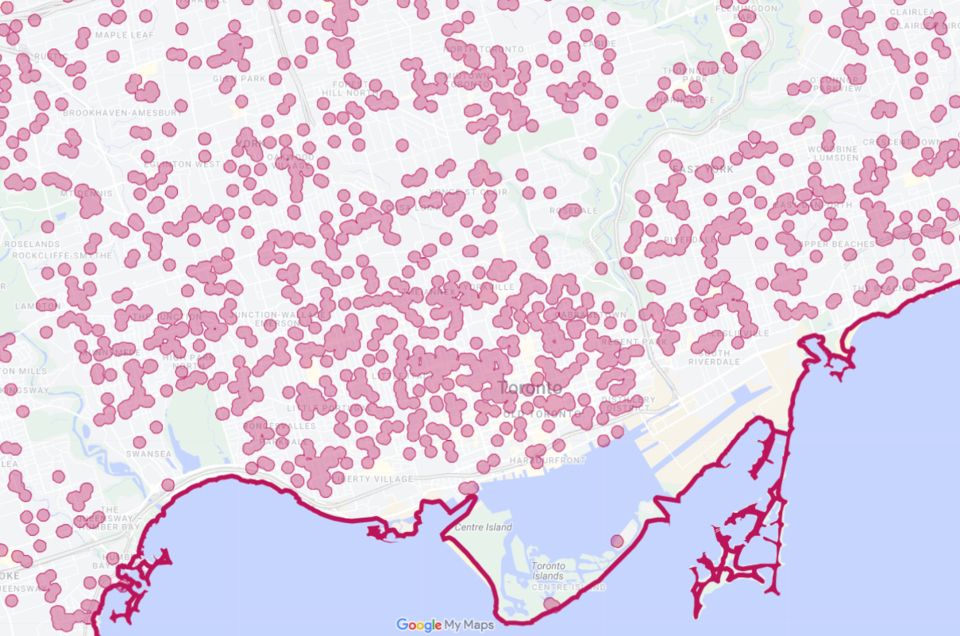A “bubble zone” bylaw that would restrict protests within 100 metres of sites like schools and places of worship would largely cover the downtown core and also major streets across the city, a visualization shows.
At city council's December meeting, Toronto councillors voted to direct staff to draft a bylaw that would "address impacts of demonstrations on the public and on access to publicly accessible spaces." The proposal will come back to council in the first quarter of 2025.
Coun. James Pasternak, whose motion was passed at the meeting, has argued for "bubble zones," which he has argued "keep protests a safe distance from vulnerable institutions, such as places of worship."
"Since October 7, 2023, the cost of policing anti-Israel protests is around $20 million,” Pasternak wrote in the motion. “The anarchy has resulted in the doubling of 911 response times and have hurt businesses due to illegal street blocking and calls for discriminatory boycotts.”
The nearest available example is in Vaughan, which in June passed a bylaw restricting protests within 100 metres of the property line of a place of worship, school, child care centre, hospital or seniors' facility.
Vaughan's bylaw bans what it calls “nuisance demonstrations,” which it defines as a protest " ... whether it is intended or not, that is likely, on an objective standard, to cause a reasonable person to be intimidated, meaning that they are either concerned for their safety or security, or they are unable to access vulnerable social infrastructure."
Maximum fines for violating the ban are set at $100,000.
TorontoToday used Vaughan's bylaw as a template to visualize what a 100-metre “bubble zone” would look like in Toronto. These zones would largely cover the downtown core and also major streets across the city, if lines are drawn around all applicable schools and facilities.
Some protests would be banned, for example, near the city's 1,071 child care centres, 1,407 places of worship or 1,194 schools. A total of 3,937 locations would be affected, though there is some redundancy in that list: for example, a church that rents space to a day care will be counted twice. In many cases, different radiuses overlap.
Some traditional places for public protests in Toronto would be covered by the “bubble zones,” including the entirety of Nathan Phillips Square, part of the area in front of the U.S. consulate, and part of the south lawn of Queen’s Park in front of the Ontario Legislative Building.
Our map shows a distance from a centre point of the property, rather than from the property line. To very roughly adjust for this, TorontoToday has displayed a 125-metre radius, but in many cases, such as elementary schools with their large outdoor play areas, the affected areas will be larger than those shown here.
